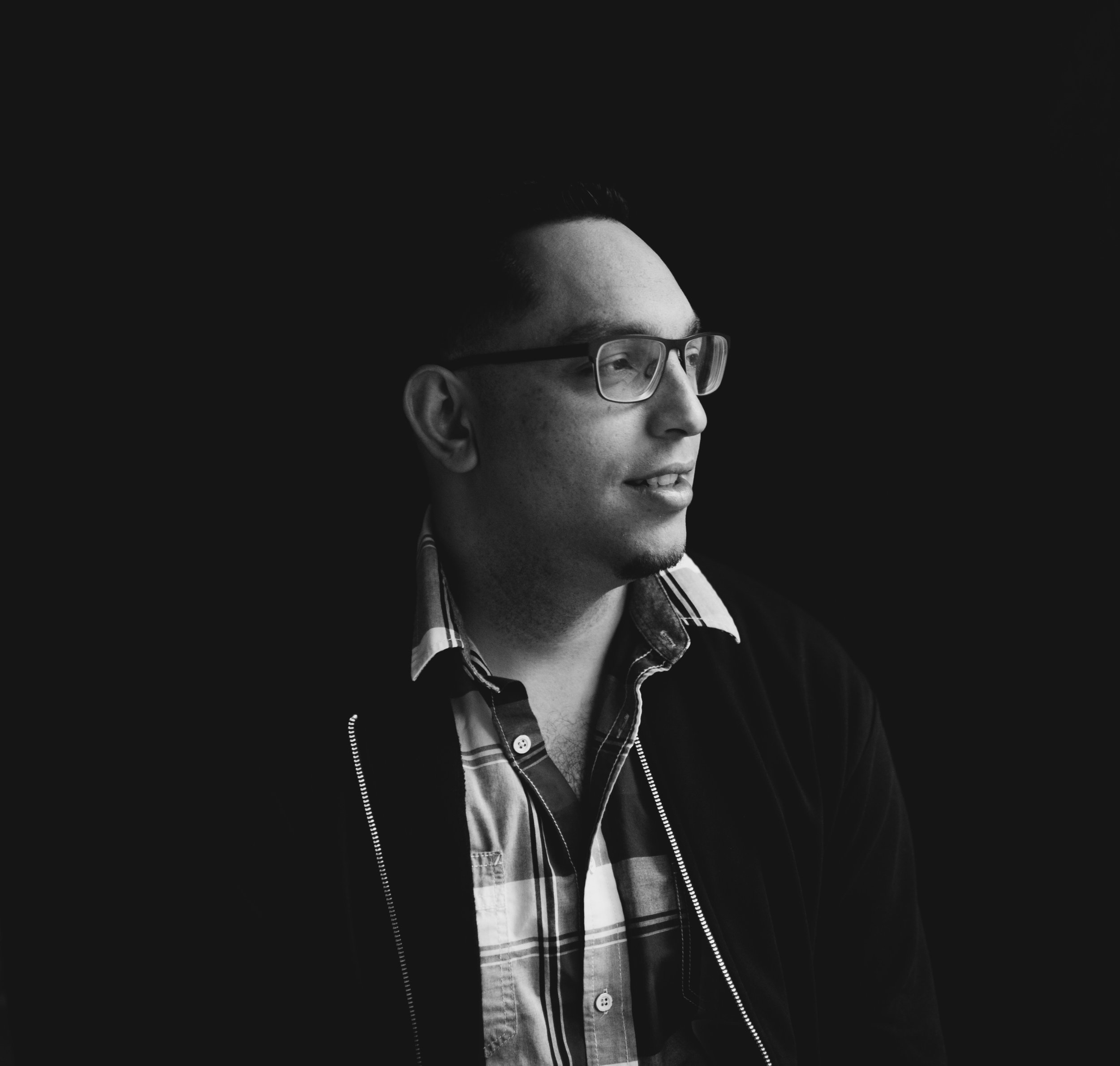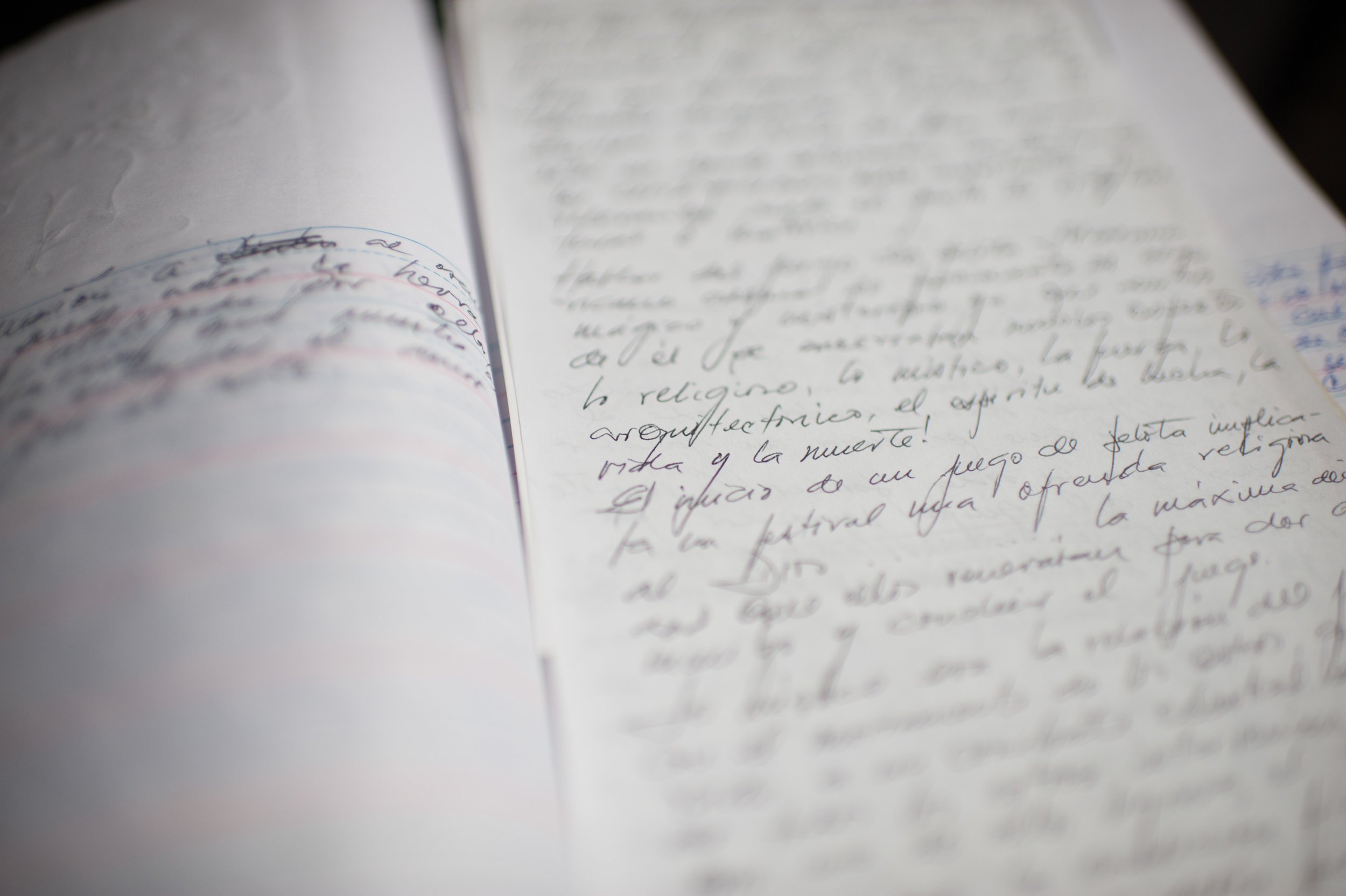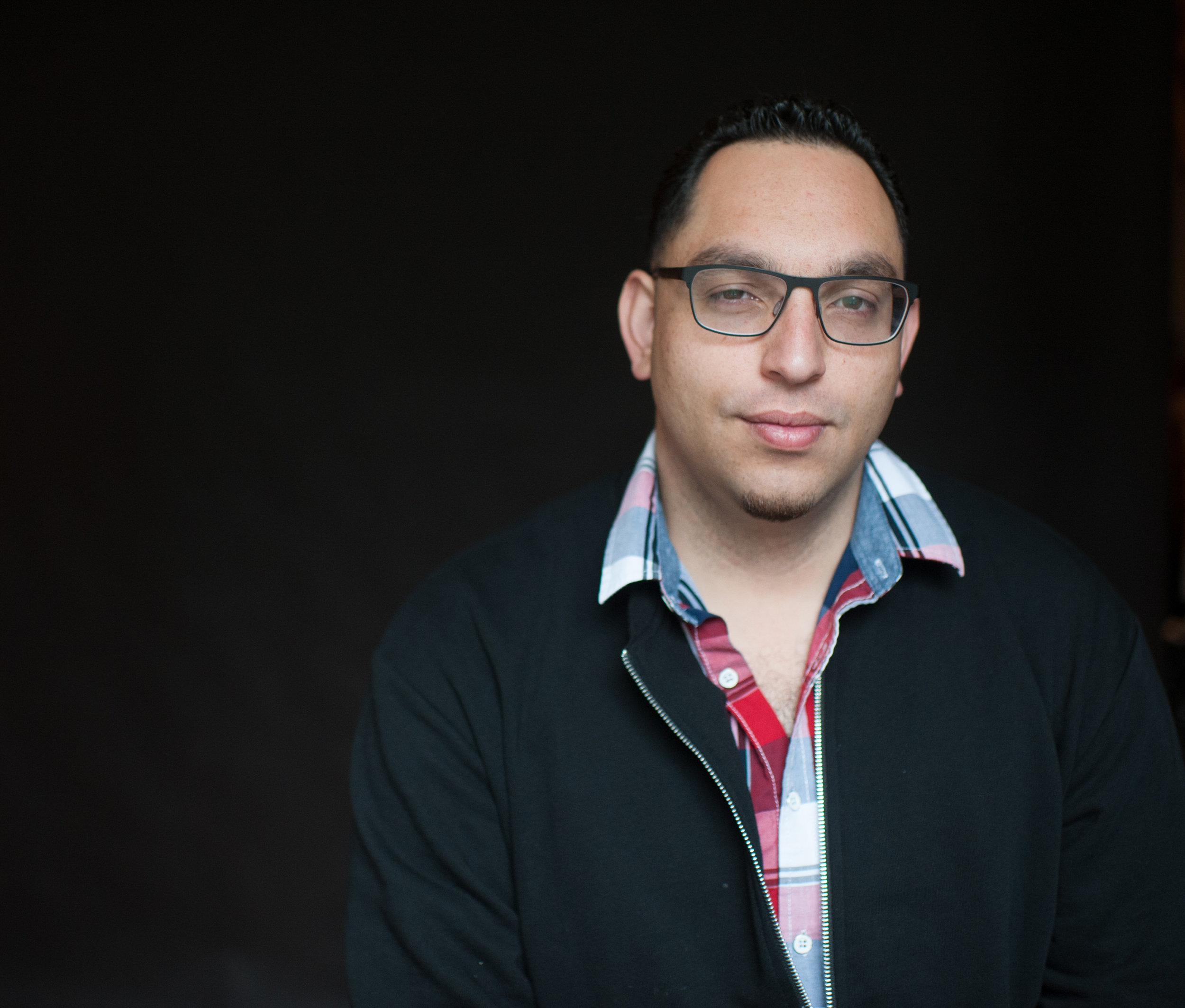Love Thy Neighbor
“‘Amar al prójimo’ is something I remember growing up with, hearing…which is basically: ‘Love thy neighbor.’ I feel like my parents really embodied that…I would hope that’s something we carry on.”
The Subject
In 1942, Nelson Rockefeller helped inaugurate the luxurious Hotel Avila in Caracas, Venezuela. Pedro ran the hotel’s banquet hall and, according to family lore, his hard work caught Rockefeller’s eye. The North-American businessman helped Pedro immigrate to the United States, where he changed his name to Peter and spent decades running the New York Hilton’s banquet hall. Back in Caracas, Peter’s wife and only son, Carlos, lived without a husband and father, but made infrequent visits to New York City. In 1989, Peter fell ill and Carlos travelled to New York to care for his father. He brought his own family with him: wife, Linay, and their two children, Karla (4) and Carlos Jr. (2). Peter sponsored his son and his family to become US citizens. Three months into the legalization process, Peter died, leaving the family’s immigration status in limbo.
After his father’s death, Carlos Sr. moved the family to Miami, where he opened his own business. The family faced several turbulent years in Miami struggling with financial hardship, frequent moves, and the stress of their undocumented status. According to Carlos Jr., unscrupulous immigration lawyers cheated his father out of thousands of dollars. Later, they could not afford to hire qualified legal counsel. After the birth of Caroline, (their third child and, at the time, the only US citizen in the family) Linay was diagnosed with breast cancer. Carlos Jr.’s mother fought the illness for twelve years before dying in 2006.
In 2005, Carlos Jr. graduated from high school but, because of his undocumented status, did not immediately pursue a college degree. He worked odd jobs until 2007, when he became an activist for undocumented youth. In 2009, Carlos enrolled in Miami-Dade College to study architecture. In 2010, he and four other undocumented youth walked 1500 miles from Miami to Washington DC in an effort to stop deportation of undocumented students and to support the DREAM act. They called their walk the “Trail of Dreams,” which lasted from January until May 2010, and garnered national attention as well as a meeting with Obama administration officials.
In 2015, Carlos Sr. passed away in Miami. In 2016, Carlos Jr. earned his degree in architecture from the Illinois Institute of Technology. He continues as an activist for undocumented youth and is currently an undocumented individual under the protection of DACA (Deferred Action for Childhood Arrivals). Below is Carlo’s story, in his own words, and with the heirlooms he holds dear.
The Objects
The Diploma
“It has a lot of significance for me. Especially because my parents weren’t able to see me graduate.
Their vision for me…[was]…to get educated in this country. In fact, that’s the main reason they decided to stay in the US. It was because of us [Carlos Jr. and his sisters], our future. I think at the end of the day it was the right decision to move to this country, especially considering the circumstances in Venezuela right now…they made the right choice, and they paid the price for it.
…the fact that I was able to graduate from architecture school and I’m doing what I’m doing now…was really a big deal for me. So it may just be a piece of paper, but it carries a lot of significance, in the honor of their memory. And the fact that they really would have loved to have been there for my graduation and to have seen me.”
“…my dad knew that I would graduate, because when he passed away, that year I was still winning scholarships. I was doing really well…I had to fundraise my way through school…through scholarships, donations…working. I did everything possible to fundraise. So my dad followed all of…the hard work that I was doing. He came so close to seeing me graduate. He passed away a year prior to my graduation.
…Since I was a kid I [drew] oil rigs and high rises… I would build [with] legos…I would build all types of structures. I’d color coordinate them…I could tell that my brain was definitely focused in that direction, or at least inclined towards industry and building. I grew up with that, too. My dad was very much into those things.”
“I graduated from high school in 2005…I couldn’t go back to school immediately. I couldn’t go to college because I was undocumented. At that time, being undocumented was really something that nobody would share. It was [considered] something to be ashamed of. It’s much more open now…But at that time it was something that definitely wasn’t on the radar. There wasn’t really much national media that was following the issue…with undocumented youth.
…I started working odd jobs. I started working six days a week at this company that was a warehouse selling truck parts, getting paid below minimum wage. Just really struggling day-to-day, trying to make it. And also I was helping out my parents—my mom was sick…she passed away in 2006. My dad…ended up finding me a job when I was nineteen with a mechanical contractor, basically doing HVAC construction. And then after that, I…befriended a mechanical engineer who, to this day, is actually a close friend of mine. And he was the one who offered me a job after I lost my first job. The economy was really bad, so to find a job in construction was really [difficult]…And so I decided to go back to school as soon as I lost my job. This was in 2007. That was the year I decided to become an activist as well.”
The Photograph
“That’s my mom. I don’t really have that many photos of her…We had to move a lot. A lot of times we were crammed in different spaces and… every other year or so, we’d get a storage [unit], and a lot of our stuff would end up in there: our furniture, all of our family memories…everything, everything. And a lot of times my parents would lose the storage [units] because they simply couldn’t pay for them. It would just become really expensive and they couldn’t afford it, so it would get auctioned off. So we would lose everything basically, everything we had in there…So I don’t really have that many objects from my mom…anything that’s material. This is one of those few photos…I think my aunt probably gave me that photo…it’s frustrating…we have very few objects that we can remember her by.
…She was incredible. Everybody loved her. She had an awesome personality…I would say she was soft-spoken, very smart…I’d say the earliest memory that I have that really impacted me was when she cut her hair. My mom had long dark, hair. Beautiful hair. Really beautiful hair…I don’t think the photo does justice, you know? So when she first cut her hair because she was going to go to chemotherapy, as a little kid that was devastating [for me]. It…was eye opening… I didn’t know what the future would entail, but I knew it wasn’t going to be easy. I think I was in third grade, and I still remember that. It’s just imprinted in my mind…If there’s any day in my life that I matured more quickly than ever, it would have been that day. ”
“I’m not an organizer. I make that distinction between an organizer and an activist. An activist is someone like myself: I will attend rallies, I will attend community events, I’ll speak at different gatherings…I get asked to do things, every once in a while I’ll get to write an article…I’ve been featured in articles for The New York Times, and many other outlets…[It is] being somebody that’s an advocate. That, in my opinion, is what a typical activist like myself does: being an advocate for a particular cause, and I do it in my own way.
…My parents didn’t really hide things from us…you hear the story of most people saying, ‘Oh, I became aware of my undocumented status when I was sixteen or seventeen’” [Laughs] “In my case, I knew, we knew, since we were little kids…I knew that something was wrong…or [something] immigration-related was happening from [when I was] five or six [years old]. As far back as I can remember…I knew I was undocumented. I knew my parents were struggling. ”
The Sculpture
“My dad was very artistic. When I was in architecture school in Miami—I transferred from Miami-Dade College to IIT [Illinois Institute of Technology] in 2013—but before that… in 2011, 2012, I was in architecture school in Miami…I lived in a small little studio with him [Carlos, Sr.] in Little Havana. We were both working…I was working at the time [and] going to school. This was after the [Trail of Dreams] walk, so things were a little bit better for me…and my dad was really happy about things… You know my dad and I were proud of who we were even though we were undocumented, we were very much keenly aware of immigration policy…So I just remember my dad and I, in this studio, we would build all types of things…On one end I would be building my architecture models and my dad would be crafting these different pictures and drawings. It was just very creative. We pumped out a lot of artwork. A lot of architecture models. ”
“…Even after I moved…to Chicago, my dad still lived in Miami…[and] he was still building these sculptures. Even though he lived in a really small, cramped space, he would build these things. Mentally he was…in a really happy place. I think the fact that the three of us were doing well: my little sister was going to community college, my older sister was working in fashion in Miami, and I was in Chicago already finishing architecture school.
…The one thing I have from him are these books and all of the artwork that he was creating during that time. And I could tell that mentally he was really happy…For him, his goal was for me to continue doing what I’m doing. And…this was way before he died, he would ask of me: ‘Carlos…I’m only going to ask you one thing, and that would be to open a museum of Pre-Columbian art in Miami.’ And I said, ‘Yeah, I’ll do it.’ So that’s something that at some point in my life [laughs] I have to work towards.”
The Notebooks
“I always think back to the fact that my dad didn’t really have a father figure…I mean he did have people that were close to him, but [not] somebody that guided him in the right direction in terms of education and would have told him, ‘Carlos you should get into architecture school or you should become an engineer.’ He never really had that. So he did it on his own. He did it…haphazardly. And it’s unfortunate that he didn’t have that [opportunity] because I think that…my dad could have been easily a scholar. He could have been… somebody studying these civilizations, or an architect. There’s so many different things that my dad could have done.
…In his own way he was still exercising his brain and…he was doing great. I…wish I would have ben able to have worked on some of these projects with him together…we would even talk about that, because my dad was trying to create a mix of art…bringing in elements…artistic elements from that [Pre-Columbian] time period, from those civilizations, combined with contemporary art work…he was heading in a good direction and it’s unfortunate that we didn’t make it to that point, to [be able to] converge with what I was doing.”
The Questions
What would you ask the original owners of these objects, if you could speak to them today?
“I would ask my dad what inspired him to pursue his interest in Pre-Columbian art with modernist elements included. I’m not sure where that particular interest came from.”
What lessons or ideas do these objects communicate that you hope your children will carry through their lives?
“…Definitely maintain intellectual curiosity…In addition, and equally important: I am an activist. We are immigrants to this country…and I would expect for them to carry on that tradition of fighting…My parents had strong values…I would say respect for humanity. A respect for others… ‘Amar al prójimo’ is something I remember growing up with, hearing…which is basically: “Love thy neighbor.” I feel like my parents really embodied that…I would hope that’s something we carry on.”
















